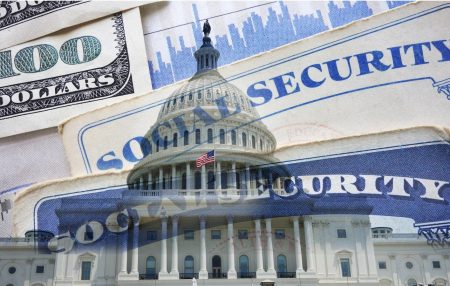What was once considered a niche is now becoming the new normal: solo aging in retirement. For millions, especially women, it’s a stage of life that demands more than savings. It calls for longevity planning that covers the entire infrastructure of living well in older age.
Nov. 11 or 11/11 is Singles’ Day, the world’s biggest celebration of buying for one. Why 11/11? Because the date is comprised of four single 1s. What started as a ‘not Valentine’s Day’ event conceived of by singles on a college campus in China is now a global retail extravaganza that generates more sales than Black Friday and Amazon Prime Day combined.
But beneath the shopping spree lies a far more significant socio-economic story.
Living alone has become one of the fastest-growing lifestyles and one that requires more planning for retirement. Nearly one in three American households is now a single-person household. People living alone face what is widely known as a “singles tax,” the extra cost of living alone. But living alone is no longer just about paying for a solo streaming plan or covering full rent. It also involves bearing all the visible and invisible costs of daily life into older age, on their own.
Singles’ Tax Math
The math is as simple as it is brutal. A single renter in a major city pays 100% of the rent, 100% of the utilities, and 100% of the maintenance. Costs are often shared between a couple. The same applies to nearly everything else: groceries, insurance, streaming subscriptions, even rides to the doctor. Living alone doubles the share of fixed costs and eliminates the economies of scale that make two-person households more cost-efficient.
But the most profound costs of retiring solo aren’t just financial. They include the unshared labor of keeping life going.
Retirement’s Hidden, Unquantified Costs
We often ignore the daily, mundane things we do each day. Everyday tasks are the activities of independence. Cooking. Driving. Paying bills. Scheduling appointments. Taking medications. Vacuuming. Taking out the trash. These are so routine that we barely notice them. That is, until we can’t, or until there’s no one to do them with us or for us.
Gerontologists refer to a wide range of tasks that most of us take for granted every day as either “instrumental or activities of daily living.” To everyone else, these activities are just the background noise of life. For couples, these chores often divide naturally: one manages finances, the other handles meals; one drives, the other keeps track of medical appointments.
When you live alone, you are both the ruler of the house and the entire staff. There’s no one to lift the heavy box from the top shelf, notice the fridge is leaking, or remind you that the car registration is due. And when health, energy, or memory start to decline, even just a little, the weight of these small things becomes heavier, fast.
The decline rarely begins with something dramatic. It starts with a forgotten errand, an unfilled prescription, or a canceled lunch because driving suddenly feels stressful. Independence doesn’t disappear all at once; it erodes with a growing list of little tasks that suddenly feel too much.
The Work Of Staying Independent
Couples may divide the work unevenly, but they still offer something solo agers don’t. Redundancy.
Someone else to notice when something’s off, pick up the medication, or pay the water bill. For solo agers, those small acts of care fall to one person or to someone paid to do them. That’s where the real cost of solo retirement appears: a leaky faucet becomes a $300 call, a bad back means hiring help, and every mundane task turns into someone else’s job and a retirement expense.
Transportation is one of the first fault lines. Losing the ability or confidence to drive doesn’t just affect mobility. It reshapes daily life. Grocery shopping, volunteering, and going out with friends each now requires coordination, scheduling, or payment. What was once freedom to live alone becomes a logistics puzzle of mobility and solo supply chain management.
And unlike couples, solo agers can’t divide and conquer the rising complexity of health care. Managing multiple prescriptions, tracking medical bills, ensuring a proper meal when cooking feels like a chore, and scheduling follow-ups can feel like a part-time job. For someone already fatigued or unwell, it often is a full-time job. A job that does not offer a bonus or benefits.
Planning For A One-Person Infrastructure
Solo retirees can’t rely on couple-focused planning that defines traditional retirement strategies. They need to build their own infrastructure for later life, covering both the standard financial and legal questions and the daily glue that holds life together, both social and practical.
The cultivation of friendships and the maintenance of a strong social circle must be intentional. Friends, neighbors, and community members are not just about remaining social; they become both your care circle and your early warning system.
And the home itself must evolve from simply a place to live to a platform of services and support. Designed to anticipate long-term accessibility, wired for monitoring, located near essentials, and easy to maintain.
Tech-enabled on-demand services can help. Smart sensors, reminders, telehealth, and delivery services. Each, however, needs to be both a consideration and a line item in a retiree’s plan and budget.
Not everything can be managed with high-tech; some tasks require a helping hand. Budgeting and finding reliable home help are expenses for both couples and singles. However, solo retirees are more likely to face long-term costs. One survey shows that the national median cost of non-medical in-home care in 2025 is about $33 per hour, with median costs across states ranging from $24 to $43 per hour.
Why Women Must Prepare For A Second Retirement
As I noted in an earlier Forbes article, for millions of women, retirement will come in two chapters. The one planned as part of a couple, and the one lived alone. Even as a couple plans retirement together today, they should also plan for her second retirement. Women not only live longer than men but are far more likely to outlive a spouse, experience widowhood, or enter retirement already single.
Today, 27% of women in their sixties live alone, compared with just one in five men. After age 75, that gap widens: 43% of women live solo, while only 21% of men do. The result is that women bear a disproportionate share of the financial, physical, and emotional costs of living and aging alone.
From Singles’ Day To Solo Futures
Singles’ Day started as a celebration of being single. It’s a lifestyle that is becoming more common worldwide. It also serves as a reminder that independence, especially later in life, isn’t just about freedom and individual choices. It means preparing for longevity and the logistics of living well.
Read the full article here









